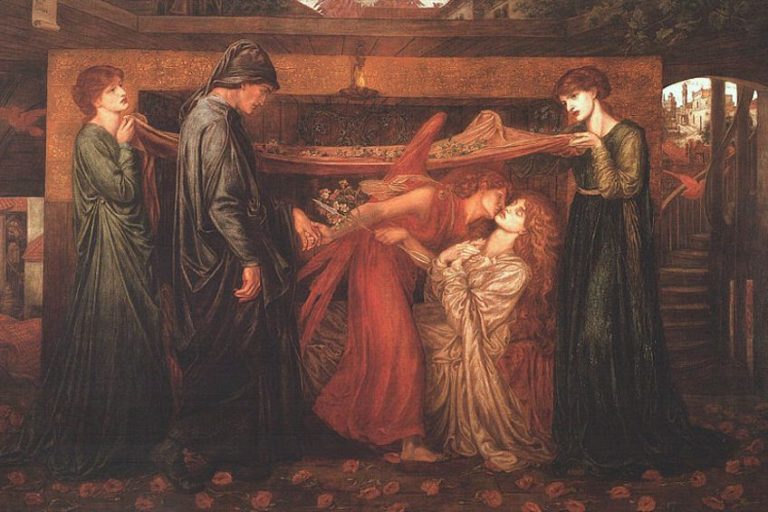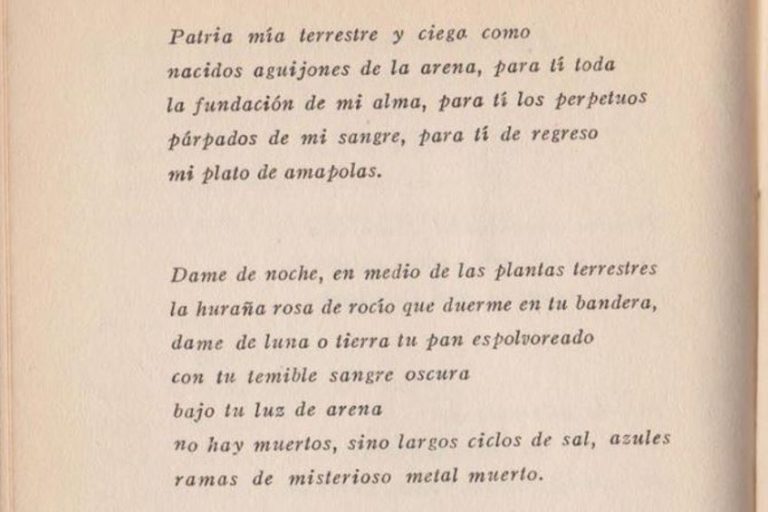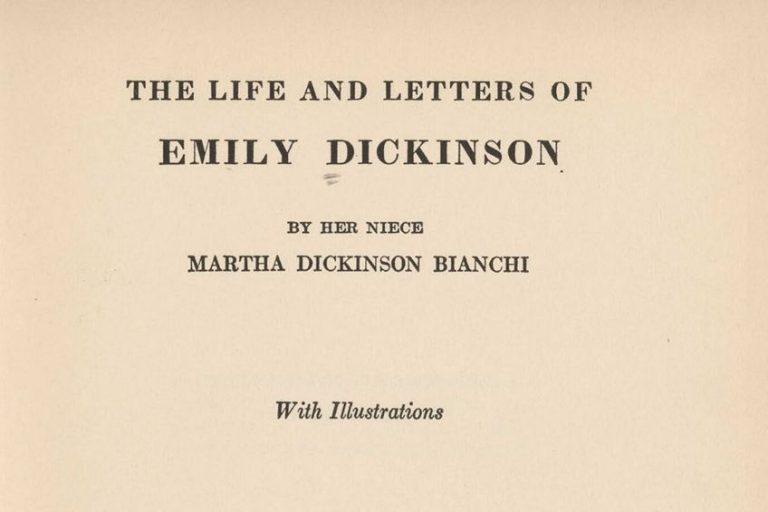“Dover Beach” by Matthew Arnold Analysis – An In-Depth Look
There have always been poems that existed in a transition state from one movement to the next, and Dover Beach is one of those poems. The poem has come to be seen as a precursor to later Modernist poetry because of the themes explored. For that reason, this poem is a good one to analyze, and so we will provide a Dover Beach summary, a brief look at the poet behind the poem in question, and an in-depth Dover Beach by Matthew Arnold analysis. If you want to learn more about the Dover Beach meanings and interpretations, let’s get started and see what we can learn along the way!
Dover Beach by Matthew Arnold Analysis
| Date Published | 1867 |
| Type of Poem | Lyric poem |
| Rhyme Scheme | Irregular |
| Meter | Variable |
| Topic | Uncertainty |
While Matthew Arnold wrote many different poems and other texts in his life, Dover Beach has generally been seen as his most significant poetic work. The poem is concerned with uncertainty and faith in view of the rapidly modernizing world of the late 19th century. It is considered to be one of the most prominent English poems of the period and an important text as a precursor to later Modernist writings. However, we will discuss many of these aspects in the sections below. So, before we do that, we can first have a look at a Dover Beach summary for those who may not have the time to read absolutely everything below.

Dover Beach Summary
A poem like Dover Beach is not necessarily a particularly easy one to understand as it also requires some understanding of historical elements. It is also written in a metaphorical style that can make it hard to parse the meaning without being familiar with certain elements on display.
That is why we’re going to provide you with a brief Dover Beach summary below:
- The poem uses the metaphor of a sea. The poem opens with a more literal description of a sea, but it quickly reveals itself to be a metaphor meant to aid us in understanding Dover Beach’s meaning as the tale of a decline in faith.
- The poem concerns a decline in faith. The poem uses the metaphor of a Sea of Faith to explore how this metaphorical sea has receded in recent years, and this points towards the secularization that was common during the life of Matthew Arnold.
- The poem uses irregular meter and rhyme. The poem’s use of meter and rhyme is not regular and serves as a more disjointed means of exploring the kind of confusion that the speaker experiences thanks to the decline in faith.
These few summary points should help with a basic understanding of the poem, but to learn a lot more about it, it would be beneficial to read the full in-depth Dover Beach by Matthew Arnold analysis below.
Biography of Matthew Arnold
| Poetic Movement | Victorian |
| Years | 1822 – 1888 |
| Place of Birth | Laleham, United Kingdom |
| Known For |
|
Matthew Arnold was an English poet and critic. In addition to this, he was a school inspector. He would go on to become well-known in his own time, and his father and siblings were also known for a variety of reasons. Arnold would go on to write about a large number of topics, but he was often very critical of the way that society was structured at the time, and while he was an agnostic, he had an appreciation for certain religious people. His most famous poem is concerned with a kind of spirituality, and so it makes sense that he would have an interest in religion in general.

While he is often remembered for his poetry, he is also well remembered for the strong influence he had on the literary world in general for his literary criticism, educational work, academic critiques of materialism and provincialism, and he was even an early lecturer who taught in English rather than Latin. His work has continued to be highly influential to this day, but it’s time to move on from this and to instead look at the poem in question. So, what is Dover Beach about? Let’s analyze it and find out!
In-Depth Dover Beach by Matthew Arnold Analysis
Dover Beach is an important poem from the Victorian era that explores feelings of difficulties with a modernizing world. A world in which hopelessness and frustration are becoming a norm that is particularly difficult to escape. The poem is generally considered to be an example of forward-thinking poetry that would only become more relevant to the world as time marched on. The poem is also one that is open to interpretation in terms of its ideas and concepts, and so this in-depth Dover Beach by Matthew Arnold analysis will not hold all the answers. There are always elements that can be missed or those that could be argued from different perspectives. However, this should give a good overview of the poem and a good launching point for those who wish to further their own analyses.
The poem concerns a crisis of faith, and understanding such a thing is important to understand this poem.
Other elements worth exploring is the use of a more freeform style. While free verse poetry was not prominent at the time of this poem’s publication, the poem can be seen through this lens. It does use rhyme but does not have an established rhyme scheme. It also varies in its use of metrical structures. One of the reasons for the latter is that a more disjointed line style, in which different lines have different syllable lengths, can serve as a means of confusing the general feeling of the poem. Dover Beach is already about a decline in faith and the confusion that can come as a result of it, and so it makes sense that the form of the poem would also hold to a similar confused composition style. However, it is not quite like later free verse poems, and so while the meter may be varied, it does not make the poem harder to read.

A final element of the poem as a whole, before we dive into the more specific elements, is that it makes use of four different stanzas, but each stanza is of a varying length. While each stanza does somewhat shift the tone, as is quite common in many instances of poetry, the use of different lengths for each stanza was more unusual at the time of the poem’s publication. It is far less uncommon in contemporary poetry. However, with all of these more general points out of the way, it is time to get to the in-depth Dover Beach by Matthew Arnold analysis, and we’ll start where we should start, with the very first stanza.
Stanza One
The sea is calm tonight.
The tide is full, the moon lies fair
Upon the straits; on the French coast the light
Gleams and is gone; the cliffs of England stand,
Glimmering and vast, out in the tranquil bay.
Come to the window, sweet is the night-air!
Only, from the long line of spray
Where the sea meets the moon-blanched land,
Listen! you hear the grating roar
Of pebbles which the waves draw back, and fling,
At their return, up the high strand,
Begin, and cease, and then again begin,
With tremulous cadence slow, and bring
The eternal note of sadness in.
The very first line of the poem introduces us to the setting. There is a sea before the speaker. We do not need to know where this sea is, but as the poem has the title, Dover Beach, it is understandable to see it as the Atlantic Ocean from Dover Beach in England. However, this does not matter outside of an understanding that this takes place in a more Western country. This is important because it relates to the later themes of faith that the poem will explore and can help us to identify which faith is being discussed in more specific terms.
The second line continues with our look at the sea, and it makes use of natural imagery that evokes a pleasant image in mind.
There is a full tide, and a beautiful moon above, and the poem continues with these kinds of general images. The purpose of dwelling on these descriptive elements is to produce a specific type of imagery. This imagery is meant to be beautiful and soothing. We are not meant to be concerned. Or at least, we are not yet meant to be concerned.
The fourth line further solidifies this poem as taking place in Dover as it mentions the “the cliffs of England”, which is a reference to the White Cliffs of Dover. However, an interesting juxtaposition occurs between the third and fourth lines where it mentions the French coast and England. These two locations are found across the English Channel, but it can also serve as a means of reinforcing the more Western aspects of the narrative that is being woven for us here.
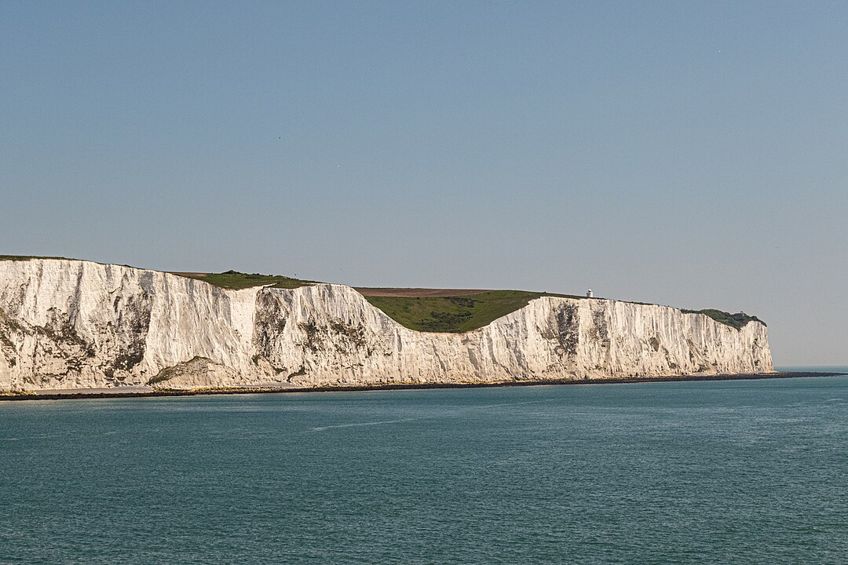
The tranquil imagery continues with words like “glimmering and vast” and “sweet”. We are treated to images of the spray of the ocean, the pulling back of the waves, and the slow flow of it all. This entire stanza is meant to create this image. There is nothing much else here that is worthy of deeper analysis because this serves as the setup for what is to come. However, what is to come is also hinted at in the final line of this stanza: “The eternal note of sadness in”.
While the poem has, until now, treated this ocean as something entirely literal, the beginning of its place as a metaphor has started to develop. The ocean before the speaker may be a vast and beautiful ocean, but it represents something far deeper, or at least it is soon going to represent something far deeper. However, we have not yet been informed by the narrative as to what exactly this ocean represents. We will soon discuss that, but the next stanza shifts the tone and changes the way that we see this ocean.
Stanza Two
Sophocles long ago
Heard it on the Ægean, and it brought
Into his mind the turbid ebb and flow
Of human misery; we
Find also in the sound a thought,
Hearing it by this distant northern sea.
The second stanza opens with a call to the ancient Greek playwright, Sophocles. This figure wrote some very important texts in the Classical era that have survived to this day, such as Oedipus Rex and Antigone. Many of his plays are concerned with mythological figures, like gods and demigods, and how they can be brought down by their own actions. They are often deeply human stories that help us to understand the ways that ancient Greek culture and religion were formulated. This is an important note to keep in mind, but there has been a dispute as to why the figure of Sophocles is evoked. He too was an author who wrote about the subjects of faith, and perhaps that is the reason. All that we can know for certain is that he is present.
It then calls our attention to the Aegean Sea.
This is the sea off the coast of Greece, and when Sophocles looked out at the sea as the speaker in the poem does, he sees an entirely different body of water, but he may have experienced similar thoughts. This is what this stanza may be trying to convey to us. It shows us that the speaker is looking out at a vast ocean, but so is Sophocles.
The speaker cannot know what Sophocles thought as he too gazed out at the sea before him, but the poem tells us that when this ancient Greek playwright stared out at the Aegean Sea, he too thought of the “turbid ebb and flow/Of human misery”. Here, we begin to see and note the start of a metaphor forming. The seas in two different places may be real seas, but they represent something deeper in terms of the poem’s way of examining things. We now see the sea as relating to human misery. There are many things that can lead to sheer human misery, but the lives of humans have often been fraught with difficulties and challenges. And so, at this point, the sea may relate to anything, but we know it is a deeply human thing.

The last few lines of this stanza call to mind a thought that comes from these seas, and it is implied to be a thought that is shared by the speaker and Sophocles. It may be in two separate places, but that same sound can still be heard and felt. It is a sound that builds up, and it is one that will become more apparent in the next stanza. We finally have some sense of resolution to the metaphor that was constructed at the start of this poem.
Stanza Three
The Sea of Faith
Was once, too, at the full, and round earth’s shore
Lay like the folds of a bright girdle furled.
But now I only hear
Its melancholy, long, withdrawing roar,
Retreating, to the breath
Of the night-wind, down the vast edges drear
And naked shingles of the world.
The third stanza opens with an answer to the question of what metaphor this sea represents when it states, rather simply, the line: “The Sea of Faith”. The capitalization of each of these is an important element to note. Poetry can make use of very specific capitalization that is intended to highlight something, and as capitalization has only been used for proper nouns in this poem, we need to heed their use here too. Why have they been used?
The capitals for a place that does not actually exist is because this kind of a statement does not represent a real place. Instead, this “Sea of Faith” is a representation of faith. In more specific terms, when understood within the context of the poem’s publication, the “Sea of Faith” is likely Christianity. While the poem never actually uses the word “Christianity”, a Western country like England (and the earlier mentioned France) is predominantly known as a Christian state in terms of religious demographics.
At the time of the poem’s publication, they were even more Christian than they are today (and this actually contributes to the poem’s message in a way that Arnold Matthew appears to have anticipated).
The next few lines speak in retrospect. They say that this Sea of Faith was “once” full and covered the earth. It was uninterrupted and powerful. However, it soon transitions to state that the speaker can now only hear it as something that is melancholic and drawing back. It is pulling its way back and away from the country. It is “retreating” from us. The remainder of the stanza contends with this reality of the situation. The Sea of Faith is leaving us behind. And this is where we need to understand some of our history at the time of this poem’s publication.
This poem was produced in the 19th century, and this was a period in which Modernism started to take hold in the later decades. It was a time of increased scientific discovery, the development of evolutionary biology, new understandings in mechanics and electricity were being found, and philosophy had taken to moving further from religion and toward a secular ideology. Later that century, Nietzsche would offer his famous proclamation that “God is dead”, and the 20th century would start with conflict and eventually end in two hot wars and one cold one.

The poem’s view of the decline in spirituality, and the decline in Christianity, can be seen in what occurred after the poem was released into the world. What Matthew Arnold wrote about the decline in faith is a powerful point to make, and while many great things have come from this more secularized period, there was also significant hardship and tragedy. For this reason, the poem may be regarded as somewhat prescient.
Stanza Four
Ah, love, let us be true
To one another! for the world, which seems
To lie before us like a land of dreams,
So various, so beautiful, so new,
Hath really neither joy, nor love, nor light,
Nor certitude, nor peace, nor help for pain;
And we are here as on a darkling plain
Swept with confused alarms of struggle and flight,
Where ignorant armies clash by night.
The final stanza continues this general message of the decline in faith, and it calls to mind ideas relating to how we should try to live our lives because it wants us to see the beauty in the world. However, while it wants us to see the beauty that lies in every direction, such as in the lines that proclaim that the world appears to be “like a land of dreams” in its stunning existence, it continues with far more pessimistic views.
The fifth and sixth lines in this stanza point towards a world in which joy, love, light, and peace are things that are no longer certain.
The idea here is that in a world of faith, there is certitude in these things because there is a benevolent god who will ensure that we receive these things. However, in a world with no faith, in which there is no god (or other divine figure of some or another variety), there is no one to ensure anything. Instead, we are all spinning on a sphere of dirt and water in an uncaring universe that is full of pain.

Many may appreciate the secularization that took place during and after the life of Matthew Arnold, but it certainly did cause difficulty and confusion. Without the seeming certainty of knowing that there is a god, how do we approach life? And the last few lines of the poem paint a dark picture of this reality. They show how the “ignorant armies” clash with one another as they struggle in the dark. Nothing is certain any longer, and we should be afraid of that. We may have a retrospective view of things at the time of writing because the world of Matthew Arnold and our own world is very different from one another, but that fear of what is to come is one that many of us can very much understand.
Dover Beach Meaning and Interpretation
We have already gone over our full Dover Beach by Matthew Arnold analysis, but to wrap a few things up, the poem is primarily concerned with faith. The idea of faith being something that we have lost. It is something that we have pushed aside in favor of scientific and philosophical advancements in our world.
For this reason, the decline in faith (which can also be seen as a decline in Christianity) is of central importance in understanding Dover Beach’s meaning.
It affects the humans who have to experience this loss of faith. The poem may be concerned with the decline in faith, but the main factor at play is how that loss in faith affects the people. How do people come to terms with that loss of faith? It’s a scary thing, and many do not respond well to such a thing, but it is also an interesting thing worth exploring.
The Influence of Dover Beach by Matthew Arnold
Dover Beach has proved to be an influential and famous poem by Matthew Arnold. It is likely the most famous poem by this particular poet. The poem, since its publication, has gone on to influence a great many writers because of its examination of faith and the difficulties that can be found therein. The poem’s somewhat difficult examination of the doubt in faith has led to many others taking great inspiration from this famous work.
Some of the largest inspirations came about in existentialism and absurdism. These trends in the arts and in thought examined a number of ideas that were also explored in Dover Beach. These trends contended with ideas like alienation and doubt, and so the Dover Beach meanings and interpretations have led to similar ideas. In addition, this poem was published long before these movements emerged. For this reason, the poem can be seen as a precursor to the kinds of ideas that would be explored in far more detail by later thinkers.
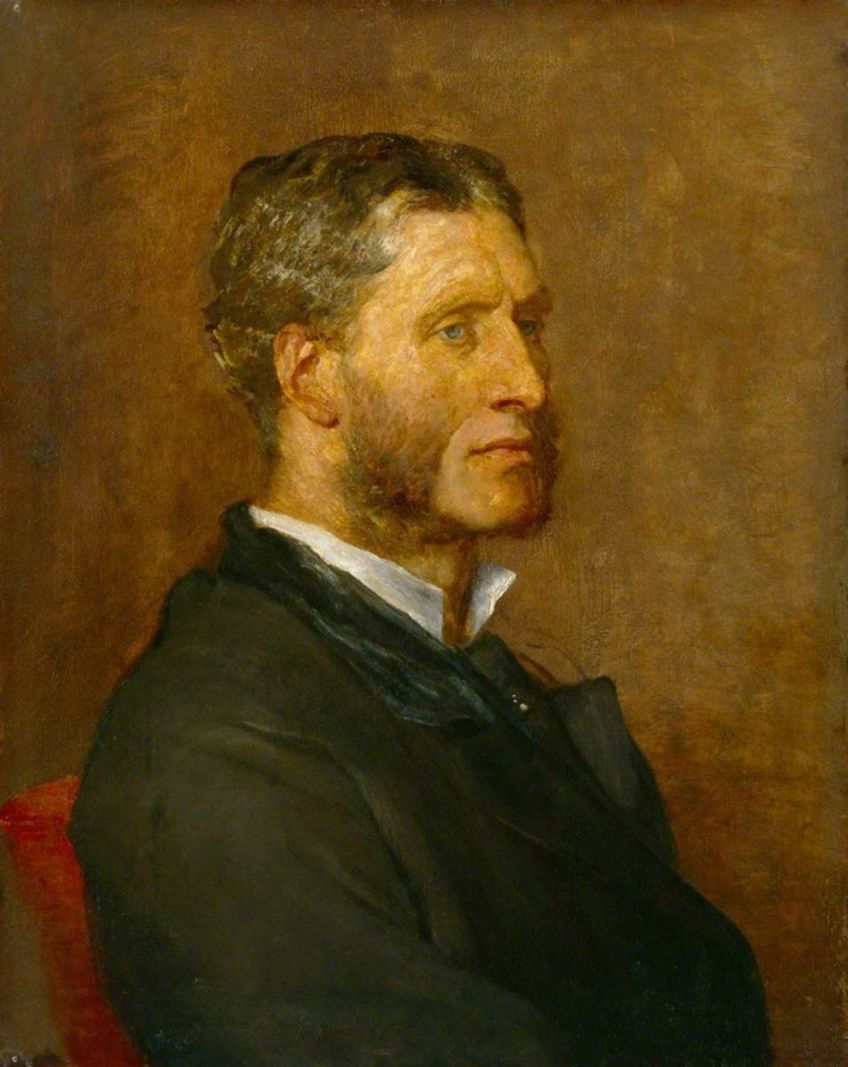
In addition to this, the poem had an influence on Modern literature in general because of its use of a narrative of decline. The Modernist period was often noted for its melancholic examination of cultural and societal decay in the face of terrible circumstances, such as the First World War. For this reason, poems like Dover Beach stand out as examples of literature with similar ideas long before these ideas became more mainstream.
There is, in addition to all of this, the rather simple fact that the poem has become very famous. For this simple reason, it has obviously touched and influenced many readers over the years. There are also, of course, readers who go on to become writers, and those writers may take some of the inspiration that they received from Dover Beach when writing their own poems and prose texts. The poem, despite being well over a century old at the time of writing, has remained a famous and resonant poem.
The seas of this article have ebbed and flowed and finally come to an end. We have spent this time discussing a Dover Beach by Matthew Arnold analysis that has, hopefully, served well in its purpose of explaining and exploring some of the ideas expressed in the poem. In addition to this, we also examined the biography of the poet, a Dover Beach summary, and tried to answer the question: “What is Dover Beach about?”. Perhaps you have your own interpretations though. Give the poem a read and see what else you can find when you read this classic 19th-century poem!
Frequently Asked Questions
What Is Dover Beach About?
This poem makes use of the metaphor of ocean to examine the ways in which faith has become far weaker and less prominent in the rapidly modernizing world of the late 18th century. For this reason, the poem is often seen as a forward-thinking piece that serves as a precursor to later movements in the arts and philosophy, such as existentialism and absurdism. The poem has remained prominent for these reasons.
Who Was Matthew Arnold?
He was a poet and a cultural critic who would go on to have incredible influence over the course of his life. He was a prominent literary critic who also argued against concepts like materialism and provincialism. In addition to this, he was an early educational reformer. When it comes to his poetry, he is likely best known for Dover Beach.
Why Does Dover Beach by Matthew Arnold Use Irregular Rhyme and Meter?
At the time of its publication, Dover Beach was written in a highly irregular style that was not very common for the period. Free verse poetry, which would later rise to prominence, was more likely to use similar methods as Dover Beach. This also means that the poem may have served as inspiration for those who also wanted to break some of the rules of poetry, and in this case, the use of more irregular rhyme and meter produces a more uncertain and disjointed effect that works well with the themes that the poem is exploring.
What Was Matthew Arnold Famous for Other Than Poetry?
While Matthew Arnold is likely best remembered today for Dover Beach, he was also very well-known for his cultural and literary criticism. He produced many critiques of contemporary society and was adept at identifying issues that needed to be addressed in the world around him. In addition to this, he was considered to be a strong educational reformer who sought major changes in the educational system, and he was even an early lecturer who taught in English rather than Latin.
Why Is Dover Beach by Matthew Arnold So Influential?
This poem has had a considerable influence on other pieces of literature and thought. The ideas explored in Dover Beach have come to be seen as an earlier form of later ideas that were explored by figures in the existentialist and absurdist traditions. It also had a role to play in the development of some of the sensibilities of Modernist literature, as it is concerned with cultural decline.
Justin van Huyssteen is a freelance writer, novelist, and academic originally from Cape Town, South Africa. At present, he has a bachelor’s degree in English and literary theory and an honor’s degree in literary theory. He is currently working towards his master’s degree in literary theory with a focus on animal studies, critical theory, and semiotics within literature. As a novelist and freelancer, he often writes under the pen name L.C. Lupus.
Justin’s preferred literary movements include modern and postmodern literature with literary fiction and genre fiction like sci-fi, post-apocalyptic, and horror being of particular interest. His academia extends to his interest in prose and narratology. He enjoys analyzing a variety of mediums through a literary lens, such as graphic novels, film, and video games.
Justin is working for artincontext.org as an author and content writer since 2022. He is responsible for all blog posts about architecture, literature and poetry.
Learn more about Justin van Huyssteen and the Art in Context Team.
Cite this Article
Justin, van Huyssteen, ““Dover Beach” by Matthew Arnold Analysis – An In-Depth Look.” Art in Context. November 21, 2023. URL: https://artincontext.org/dover-beach-by-matthew-arnold-analysis/
van Huyssteen, J. (2023, 21 November). “Dover Beach” by Matthew Arnold Analysis – An In-Depth Look. Art in Context. https://artincontext.org/dover-beach-by-matthew-arnold-analysis/
van Huyssteen, Justin. ““Dover Beach” by Matthew Arnold Analysis – An In-Depth Look.” Art in Context, November 21, 2023. https://artincontext.org/dover-beach-by-matthew-arnold-analysis/.






